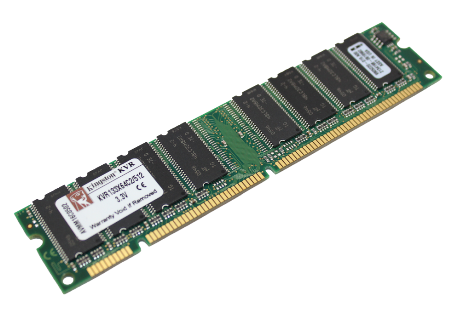
- Computer - Home
- Computer - Overview
- Computer - Advantages & Disadvantages
- Computer - Classification
- Computer - Applications
- Computer - History & Evolution
- Computer - System Characteristics
- Computing Origins
- Computer - Origins
- Computer - Generations
- Computer - Types
- Computer Components
- Computer - Components
- Computer - CPU
- Computer - CPU Components
- Computer - Arithmetic Logic Unit (ALU)
- Computer - Control Unit
- Computer - Input Devices
- Computer - Output Devices
- Computer - Memory Units
- Computer Hardware
- Computer - Hardware
- Computer - Motherboard
- Computer - GPU
- Computer - PSU
- Computer Software
- Computer - Software
- Computer - Software Types
- Computer Data Storage & Memory
- Computer - Data Storage
- Computer - Types of Data Storage
- Computer - Hard Disk Drives (HDD)
- Computer - Solid State Drives (SSD)
- Computer - Memory Cards
- Computer - Optical Storage
- Computer - NAND Flash Memory
- Computer - NVMe Memory
- Computer - CompactFlash Card
- Computer - Cloud Storage
- Computer Memory
- Computer - Memory
- Computer - Primary Memory
- Computer - Secondary Memory
- Computer - RAM
- Computer - ROM
- Computer - DRAM
- Computer - VRAM
- Computer - Cache Memory
- Computer Internet & Intranet
- Computer - Internet and Intranet
- Computer - Internet
- Computer - Extranet
- Computer - Websites
- Computer Office Tools
- Computer - Word Processors
- Computer - Spread Sheet
- Computer - Power Presentations
- Computer - E-mail Tools
- Computer Miscellaneous
- Computer - Ports
- Computer - Number System
- Computer - Number Conversion
- Computer - Data and Information
- Computer - Networking
- Computer - Operating System
- Computer - Keyboard Shortcut Keys
- Computer - Virus
- Computer - Antivirus
- Computer - How to Buy?
- Computer - Available Courses
- Calculator Vs. Computer
- Brain Vs. Computer
- Analog Vs. Digital Computer
- Supercomputer Vs. Mainframe Computer
- Mainframe Vs. Minicomputer
- Printer Vs. Scanner
- OCR Vs. MICR
- File Vs. Folder
- exFAT Vs. FAT32
- FAT32 Vs. NTFS
- FAT32 Vs. exFAT Vs. NTFS
- CPU Vs. GPU
- GUI Vs. CLI
- GUI Vs. CUI
- Cache Memory Vs. Virtual Memory
- Register Vs. Memory
- RAM Vs. CAM
- SRAM Vs. DRAM
- DDR2 Vs. DDR3
- PROM Vs. EPROM
- CD Vs. DVD
- Blu-Ray Vs. DVD
- MMU Vs. MPU
- Computer Terminologies
- Microsoft Windows
- Desktop
- Monitor
- Microphone
- Keyboard
- Keypad
- Mouse
- Printer
- Webcam
- Floppy Disk Drive
- Compact Disc
- Program
- Incognito Mode
- Electronic Mail (E-Mail)
- Server
- Cloud Hosting
- Minicomputers
- Supercomputer
- Bit
- Byte
- Kilobyte
- Megabyte
- Terabyte
- Yottabyte
- Zettabyte
- Exabyte
- Petabyte
- JEDEC
- Hub
- Block Storage
- Username
- URL
- Num Lock
- BIOS
- Bluetooth
Dynamic Random Access Memory (DRAM)
Dynamic RAM (DRAM)
Dynamic RAM (DRAM) is a type of semiconductor memory that uses capacitors to store the bits. The charging and discharging of the capacitor represents 0 and 1 i.e. the two possible values that can be stored in a bit.
The DRAM is a volatile memory i.e. the data in memory is lost when power is switched off. However, it still displays some data remanence. DRAM is low cost compared to SRAM so it is primarily used in main memory.
The following displays a DRAM:

Versions of DRAM
Asynchronous DRAM
This was the first type of DRAM in use but was gradually replaced by synchronous DRAM. This was called asynchronous because the memory access was not synchronized with the system clock.
Synchronous DRAM
This DRAM replaced the asynchronous RAM and is used in most computer systems today. In synchronous DRAM, the clock is synchronised with the memory interface. All the signals are processed on the rising edge of the clock.
Graphics DRAM
There are many graphics related tasks that can be accomplished with both synchronous and asynchronous DRAM. Some of the DRAM used for these tasks are Video DRAM, Window DRAM, Multibank DRAM etc.
Difference between DRAM and SRAM
There are many differences between DRAM and SRAM. Some of these are given as follows:
- Both static and dynamic RAM are types of RAM but SRAM is formed using flip flops and DRAM using capacitors.
- It is necessary that the data in DRAM is refreshed periodically to store it correctly. This is not necessary for SRAM.
- SRAM is normally only used in Cache memory while DRAM is used in main memory.
- Static RAM is much more faster and expensive as compared to Dynamic RAM.
- Since SRAM is used as Cache memory, its size is 1MB to 16MB. On the other hand, dynamic memory is larger as it is used as main memory. Its size is 4GB to 16GB in computers and laptops.
- SRAM is usually present on processors or between processors and main memory. DRAM is present on the motherboard.